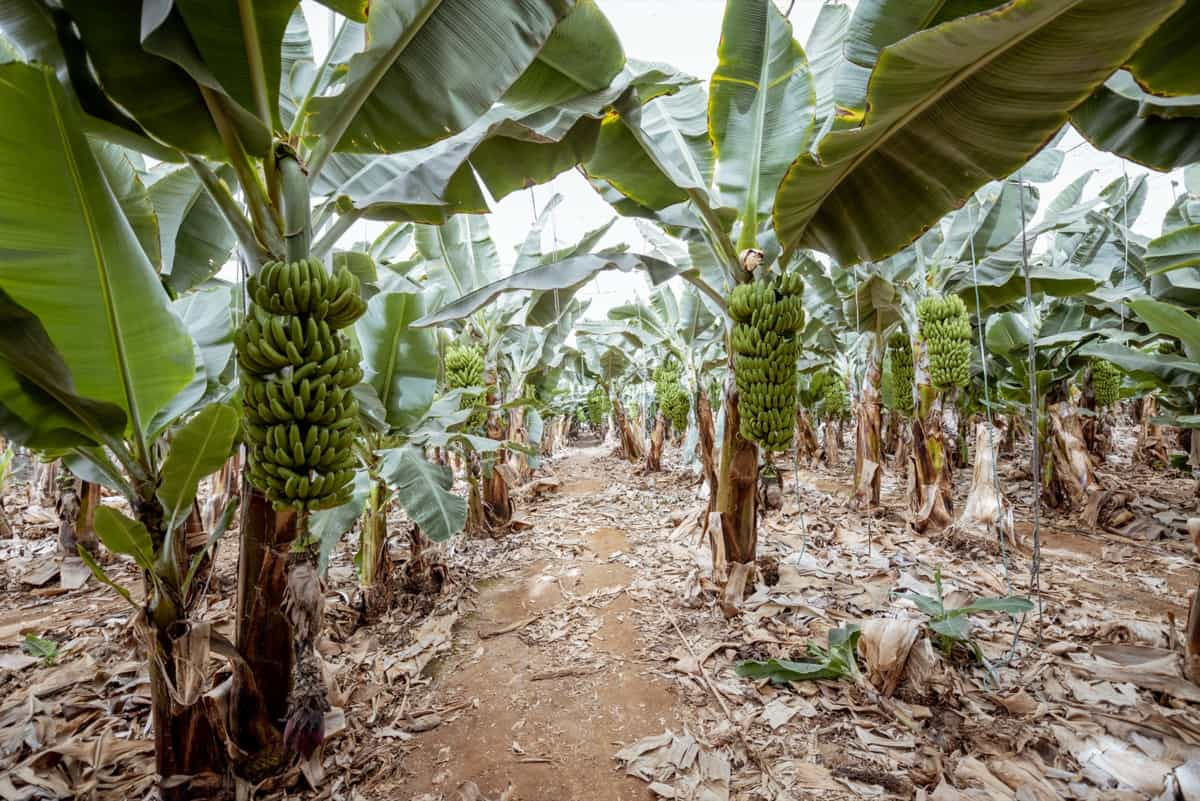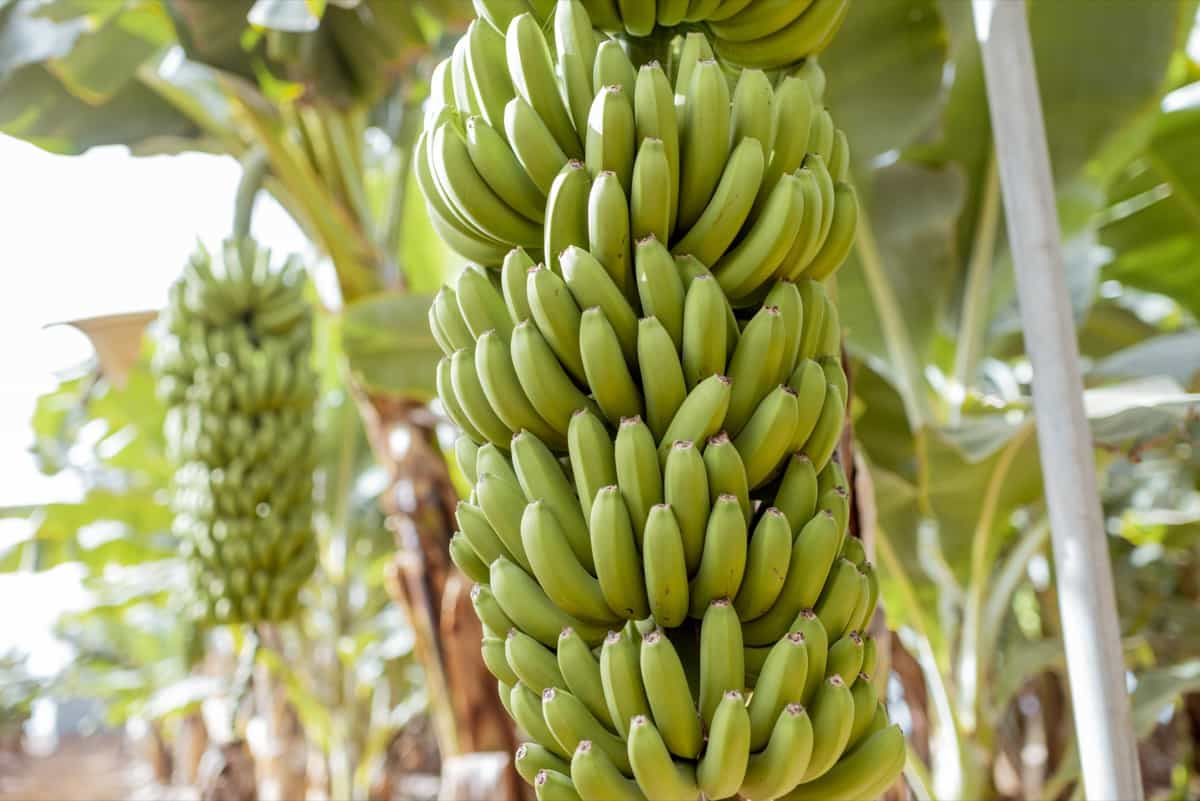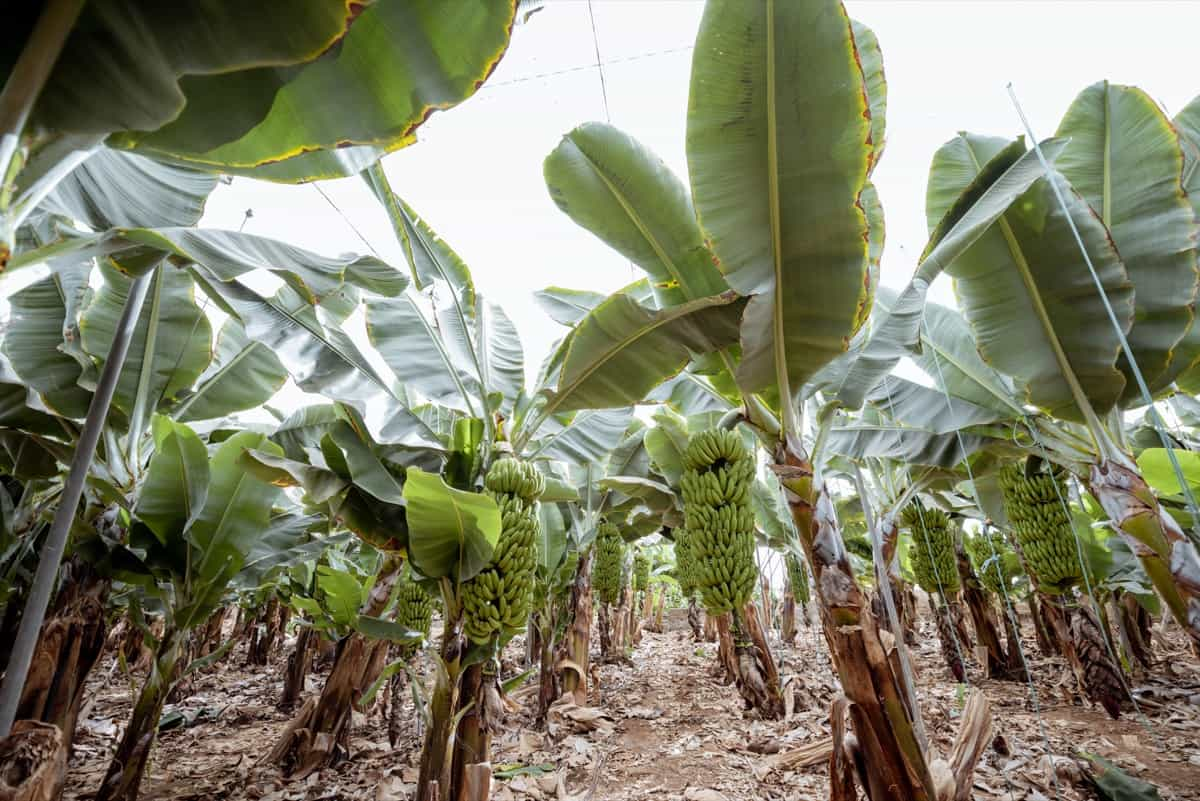Banana trees are an incredibly versatile and useful plant grown in most climates. Unfortunately, even with proper care, banana trees can succumb to various issues. A variety of factors can cause a dying banana tree. How to fix a dying banana tree is described in this article.

9 Causes of Dying Banana Tree
Why is My Banana Tree Dying in Summer Heat, and How Can I Save It?
Banana trees are incredibly heat-sensitive plants prone to suffering in hot, dry climates. When exposed to extreme temperatures, banana trees may show distress signs, such as wilting leaves, yellowing foliage, and a general decline in health. To keep your banana tree healthy during the summer heat, there are a few steps you can take.
- Banana trees are especially prone to dehydration and must be watered deeply and regularly during summer.
- Provide shade for your banana tree, which will help it stay cool and avoid sunburn.
- Mulch around the tree keeps the soil moist and cool by providing an extra insulation layer. Plus, it helps to keep weeds from encroaching on the tree.
Preventing Banana Tree Death From Fungal Infections: Effective Remedies and Prevention Tips
To keep your banana trees healthy and thriving, take preventative measures to avoid fungal infections. Several preventative tips can help keep your banana trees safe from fungal infections.
- Prune the trees properly and maintain healthy soil by fertilizing the banana trees regularly.
- Avoid overwatering the banana trees, as this can lead to fungal infections. Watering the trees deeply but infrequently and making sure the soil is well-draining.
- When treating a banana tree with a fungal infection, use a fungicide specifically formulated for the type of fungus that is infecting the tree. Read the package labels carefully to ensure that the fungicide is appropriate for the type of fungus.
Identifying Nutrient Deficiencies in Banana Trees and Remedies to Revive Them
Identifying and resolving nutrient deficiencies in banana trees can be quite challenging, but with a bit of knowledge and careful observation, it is possible to revive these valuable trees. Nutrient deficiencies in banana trees can be identified by looking for telltale signs, such as yellowing leaves, stunted growth, and poor fruit production. The common nutrient deficiencies in banana trees are nitrogen, phosphorus, and potassium, although other minerals may also be deficient. It is best to consult a soil test to determine which minerals are lacking to diagnose the issue.
- To remedy a nitrogen deficiency, apply a fertilizer high in nitrogen, such as urea or ammonium nitrate.
- To remedy a phosphorus deficiency, apply a fertilizer high in phosphorus, such as rock phosphate or triple superphosphate.
- To remedy a potassium deficiency, apply a high-potassium fertilizer, such as potassium chloride or potassium sulfate.
How to Protect Banana Trees From Pests and Diseases to Prevent Decline and Death
Banana trees are susceptible to various pests and diseases that can cause decline and death if left unaddressed. Below are steps to protect banana trees from pests and diseases to prevent decline and death.
- Good sanitation is the best way to protect banana trees from pests and diseases.
- Choose varieties resistant to the pests and diseases that could affect your banana trees.
- If you notice your banana trees are affected by pests or diseases, you should treat them as soon as possible. This could include applying insecticides or fungicides specifically designed to target the pests and diseases affecting your banana trees.
- You can introduce beneficial insects to your garden or grow companion plants to help deter pests and diseases from attacking your banana trees.
Overwatering Issues in Banana Trees: Signs, Symptoms, and Steps to Rescue a Dying Tree
Overwatering is a common cause of issues in banana trees. Knowing the signs, symptoms, and steps to rescue a dying tree. Signs of overwatering in banana trees include yellowing of the leaves, wilting or drooping of leaves, and stunted growth. The tree’s roots can also become waterlogged, leading to a lack of oxygen for the roots. The soil can also become compacted, leading to poor drainage and an inability to absorb nutrients.
To rescue a dying tree due to overwatering, it is important first to identify the problem. Check the soil moisture levels and adjust the watering schedule accordingly. If the soil is too wet, let it dry before watering again. Additionally, be sure to aerate the soil regularly, as this will help to improve drainage and increase oxygen levels. If the root system is damaged, then gently loosen the soil around the roots to help facilitate airflow and water absorption.
In case you missed it: How to Grow Bananas in a Greenhouse: A Step-By-Step Guide for Suckers to Harvest

Underwatering Issues in Banana Trees: Signs, Symptoms, and Steps to Rescue a Dying Tree
Sadly, banana trees are vulnerable to underwatering, damaging them irreparably. Understanding the signs of underwatering and taking steps to revive a dying tree can help gardeners keep their banana trees healthy and productive. Symptoms of underwatering in a banana tree include wilting leaves, browning and yellowing of the leaves and an overall lack of vigor.
Steps can be taken to revive the tree once the cause has been identified. The first step is carefully watering the tree to ensure the roots and soil receive the proper moisture. If the soil is dry, the tree may need to be watered several times daily until fully hydrated. Once the tree is hydrated, it is important to maintain consistent watering habits to prevent it from becoming underwatered again.
Banana Tree Winter Damage/dying: Protecting Trees From Frost and Cold Temperatures
Unfortunately, even banana trees are vulnerable to cold temperatures and frost, which can cause significant damage to the tree and even death if the conditions are severe enough. To protect the tree from winter damage, take steps to protect it from frost and cold temperatures.
- It should be planted in an area sheltered from cold winds. This can be done by planting the tree near a wall or other structure to block the wind and protect it from frost.
- Provide adequate insulation by covering the tree in winter blankets or burlap bags, which will help trap heat and prevent the cold air from reaching the tree.
- Additionally, ensure that the tree is watered during winter, as dry soil is more prone to frost damage.
Improper Pruning May Cause Banana Tree Death: Pruning Methods for Healthy Growth
Improper pruning can cause undue stress to the trees and even result in their death. To ensure your banana trees stay healthy and keep producing, it’s important to prune them correctly. When pruning a banana tree is only to remove the dead leaves and fruit. Removing too much of the foliage can damage the tree and reduce its ability to produce fruit.
In addition to removing dead leaves and fruit, it’s also important to prune away any suckers growing near the tree’s base. These suckers can take away energy and nutrients from the main trunk, causing it to become weak and eventually die.
Reviving a Stressed Banana Tree: Rehabilitation Methods for Overall Recovery
Reviving a Stressed Banana Tree can often be a challenging task. Thankfully, a few rehabilitation methods can be employed to help ensure the overall recovery of the tree.
- Assess the tree’s current condition, providing a starting point for rehabilitation. Look for signs of disease and any yellowing or browning of the leaves. If any of these signs are present, address them before continuing.
- Improve the soil and water conditions of the banana tree. Ensure the soil is well-draining and not overly saturated with water. Additionally, the soil must be organic-rich to promote healthy root growth.
- Ensure to use a fertilizer specifically designed for tropical fruit trees. Follow the dosage instructions to ensure proper application.
- Provide the banana tree with adequate sunlight. Planting should be done in areas with at least 6 hours of sunlight daily.
In case you missed it: Sigatoka Disease in Banana: Prevention and Control Methods

Conclusion
There are several causes of death in banana trees, but the most common are inadequate water, poor soil quality, pest infestations, and disease. By ensuring you water your tree regularly, amend your soil with organic matter, use an organic pesticide, and prune off any dead or diseased leaves, you can help keep your banana tree healthy and ensure it lives a long and healthy life.
- Feed Your Flock for Less: Top 10 Tips to Save on Chicken Feed
- Ultimate Guide to Ossabaw Island Hog: Breeding, Raising, Diet, and Care
- Hatching Answers: The Top 10 Reasons Your Chickens Aren’t Laying Eggs
- Eggs and Economics: Breaking Down the Cost of Raising Backyard Chickens
- Defend Your Greens: Proven Methods to Keep Iguanas Out of Your Garden
- Ultimate Guide to Cinnamon Queen Chicken: A Comprehensive Guide for Beginners
- Ultimate Guide to California Tan Chicken: Breeding, Raising, Diet, Egg-Production and Care
- Ultimate Guide to Marsh Daisy Chicken: Breeding, Raising, Diet, and Care
- 10 Types of Chicken Farming Businesses You Can Start for Profits